German City Trips in 2024
German City Trips to explore more the own Country
In 2024, I planned to see more of the German cities to get to know more about the own country and to cross out some of the cities, I really wanted to visit. Since I'm living in Freiburg, it was even harder to travel through Germany, because of the distances to other places. So on the one side, I focussed on travelling to cities, which aren't too far away. On the other side, I also took the chance to visit friends, who are spread in the whole country.
As mentionned, I started to focus on cities, which are easily to reach from Freiburg, first. So I took my "Deutschlandticket" for a trip to Karlsruhe. Via Offenburg, it was an almost two hours train ride for me and when I went out of the train, it was freaking cold and somehow I was regretting, that I made the trip. But it was too late to complain and to turn back, so I tried to manage the cold and started to walk from the train station in the direction of the city centre. On the way, I passed by the Karlsruhe Zoo, a city garden with a zoo and the Ettlinger Tor mall. Then, I finally reached the Karlsruhe Pyramid, a red sandstone pyramid in the centre of the market square, erected between 1823 and 1825 over the vault of Margrave Charles III William, the founder of the city of Karlsruhe. Therefore, it's one of the most famous landmarks of the city. Around the market square, it's also possible to admire the Protestant City Church and the Town Hall from 1805, which was destroyed in the Second World War and rebuilt between 1948 and 1955. The next destination was the Karlsruhe Palace, built in 1715 for the city founder Margrave Charles III William of Baden-Durlach. Nowadays, the building is home to the main museum of the Badisches Landesmuseum.
After a visit in the museum, I took a tram in the direction of Durlach, with a population of approximately 30,000 the biggest borough of Karlsruhe. Durlach was once an independent city and was used as residence of the Margraviate of Baden-Durlach from 1565 to 1718, before Karlsruhe was founded. In my opinion, the centre of Durlach was more beautiful than the one from Karlsruhe. There were many beautiful half-timbered and coloured houses, cute cafés and a fountain, showing a love couple and animal couples. A few steps later, I visited the remains of the Karlsburg Castle and afterwards, I made a walk up to the Turmberg, the backyard mountain of Durlach. It was really exhausting to walk all the steps up, but from the top, I could see all around Durlach, even if it was getting a bit foggy due to the humidity.
Inside the Karlsruhe Palace, I went to the Badische Landesmuseum, a large cultural, art and regional history museum of the Baden region. The museum was opened in 1921 and the collections range from prehistory and early history to the Middle Ages and the 21st century. On the ground floor, there was an exhibition of the history of the Margraves of Baden-Durlach and the crown of the Grand Duchy of Baden, followed by the exhibition of the ancient cultures of the Mediterranean, focussed on Egyptian, Greek and Roman exhibits. The next part of the museum in the basement contained vessels, weapons, tools and jewelry from the Paleolithic to the Carolingians. It was really exciting to see the collection, found in Baden from different time periods. The first floor dealt with Baden in the late Middle Ages, Renaissance and Baroque together with the building history of the Karlsruhe Palace. The museum tour was completed in the second floor with the history of Baden and Europe from 1789 until the 21st century
This January, I finally could visit my Vietnamese friend Mai in Nürnberg. It was planned to visit her in December already, so we could have explored the Christkindlesmarkt, the famous Christmas market in Nürnberg, but unfortunately, a strike of the train drivers stopped me, before I even had the chance to go. This year, it seemed like, I'll have bad luck again, since there was another strike directly on the weekend, when I wanted to go, but at least, some trains were still on the tracks.
After almost five hours in the train, I finally arrived and directly got surprised by the beautiful Handwerkerhof on the opposite side of the train station. In the small half-timbered houses and narrow lanes, artisans offer their specialties such as "Nürnberger Rostbratwürste", Franconian beer and wine specialties, gingerbread, wooden or tin toys and other handicrafts in a medieval atmosphere. Since I really love gingerbread, I bought two packages of the "Elisenlebkuchen", which is famous for being proddduced in Nürnberg. After I brought my luggage to the hotel, I started to walk around a little bit. The first sightseeing spot, I reached, was the medieval and Gothic style St. Lorenz Church. During World War II., the church was badly damaged, but after restoration works, it became one of the most prominent churches of the Evangelical Lutheran Church in Bavaria nowadays. Along with the Frauenkirche and the St. Sebaldus Church, it's one of the three most important churches of the city. Unfortunately, it was closed, when I was there, so I decided to enter the St. Sebaldus Church around the Albrecht-Dürer Square in front of the old city hall. It was definitely worth it to go inside, but next time, I'd love to see the St. Lorenz Church from inside too.
For me, Nürnberg wasn't only a city of beautiful churches, it also offered many interesting fountains like the 14th century fountain called Schöner Brunnen, which literally means beautiful fountain. The fountain has the shape of a Gothic spire and with its approximately 19 metres and 40 colourful figures which represent the world view of the Holy Roman Empire, it's another highlight in the city centre of Nürnberg. In the pedestrian zone on the other side of the Pegnitz river, I accidentally found the Hans-Sachs Fountain, also called Ehekarussel. The fountain depicts six figures of different scenes from the ups and downs of married life - from the first passionate love to marrital quarrels up to the death.
For ending the Friday in a medieval kind of feeling, I made a little walk up to the Castle of Nürnberg, a group of medieval fortified buildings on a sandstone ridge dominating the historic centre of the city. I relaxed a couple of minutes with the panoramic view, before I decided to have some dinner at "Finyas Taverne", a tavern in a medieval style, where I got some delicious tarte flambée and a very tasty kind of mulled wine out of honey wine and blueberry wine. It was the perfect ending for the first day. On Saturday, I also walked around the city, before I met Mai for a coffee and a cake in the city centre. Since we haven't met for a really long time, we had a lot of stories to share, so we continued talking - first while we had a fantastic Vietnamese dinner and afterwards by drinking some wine at her place. We also got some fancy cinnamon buns for the Sundays brunch, after having a walk around the Wöhrder Lake to enjoy some sunshine.
Beside visiting Mai and seeing some of the classical sightseeing spots, I was also interested in getting to know more about the history of the city by visiting museums and medieval tours. Unfortunately, I had only time to visit one museum, so I decided to go to Albrecht Dürer's House, the former home of German Renaissance artist Albrecht Dürer from 1509 to his death in 1528. I was really fascinated by the artworks, even if many of them were just replications by other artists, but the treasures in the topmost floor were all originals by Albrecht Dürer. While enjoying the Albrecht Dürer's House, I was also thinking about learning something about the Nürnberg in the medieval times. Luckily, I found out that there are two different tours - explaining the city under the ground. So I started with the tour of the Medieval Hole Prisons. The prisons are a facility of the museums of the city and still contain the almost unchanged structure of a large medieval remand prison. They are located in the cellar vaults of the old town hall of the city. The prison cells were used for pre-trial detention until a judgement was made, so that the prisoners had to spend several days tied up in the tiny cells in complete darkness. Some cells were reserved for a certain type of inmates: Cell number 11 shows a red rooster, the symbol of arson, cell number 12 is marked with a black cat, indicating slanderers. In addition to the cells, the prison also contains a blacksmith shop, the Lochwirt's apartment and the torture chamber, called "the chapel" because of its size. It was a kind of eldritch atmosphere, knowing about the situation in the prisons in the medieval past. During the second tour in the so called Felsenkeller, an extensive system of tunnels and cellars beneath the old town of Nürnberg, I learned, how important beer was already in the medieval time, since the system of corridors was mainly used for the fermentation and storage of beer. An ordinance of the City Council of Nürnberg from 1303 can be seen as a kind of purity law for beer, in which it was stipulated that only malted barley could be used for brewing beer, because all other types of grain should be saved for the bakers. This regulation marked the beginning of the famous beer history of Nürnberg. To ensure the desired cooling of the stored beer, so called cooling domes were built across the floors, which were filled with ice in winter. Moreover, a system of ventilation shafts developed in the 14th century still ensures a constant air exchange nowadays, so the system of cellars were used as air-raid shelters during World War II. to safe a huge number of population during the bombing of the city.
In February, I decided to make a one-day-trip to the city of Speyer in Rhineland-Palatinate. I wanted to check out the atmosphere of the city and moreover, I was always interested to go to the Technik Museum. When I arrived at the train station of Speyer, I had to walk approximately ten minutes to reach the old town with the Maximilianstraße as its main street, which was laid out in the 11th century together with the construction of the cathedral of Speyer and the subsequent first expansion of the city. In the old imperial city, the boulevard, connecting the Altpörtel, a medieval city gate, which is today one of the largest and most architecturally significant of the remaining city gates in Germany, with the cathedral, was well known as Via Triumphalis. Following the street in the direction of the Roman Catholic Imperial Cathedral of Speyer, which was added to the UNESCO World Heritage List of culturally important sites as a major monument of Romanesque art in the German Empire in 1981, I passed by many interesting buildings like the Baroque style Old Mint building, which was the transshipment point for trade until the 19th century, the St. George's Fountain, which was built in 1930 to honour those who died in Wolrd War I. or the bronze sculpture of a pilgrim that commemorates Speyer as the starting point or stop on the Way of St. James, which was donated to the city on the occasion of the city's 2000th anniversary in 1990. Close to the cathedral, it was also worth it to visit the Ölberg, the Heidentürmchen, a remnant of the medieval city wall, and the "Fährmann hol' über" sculptures with the legend of Speyer:
"Des Fährmanns Traum" - Vom Dom kommend ziehen die Kaiser über den Rhein, um in großer Not dem Reich zu helfen. Sie rufen: "Fährmann hol über!"
The eight emperors and kings, buried in the cathedral, leave their resting place to assist the German Empire in its time of need. According to the legend, they call for the ferryman on the other side of the Rhine.
After having a little coffee break, I went to the Jewish Courtyard, a UNESCO World Heritage Side since 2021 as SchUM site for the Jewish Heritage for the World. The acronym SchUM is made out of the first letters of the Hebrew city names of Speyer (Schpira = Sch), Worms (Warmaisa = U) and Mainz (Magenaza = M). The Jewish courtyard in Speyer consists of the remains of the synagogue, its courtyard and the women's shul (prayer room), an intact Mikvah for ritual washing, and a yeshiva for teaching and stuyding. For me, it was very interesting to learn something about the Jewish history in Speyer from the medieval times on and the mikvah was definitely a must-see-place in Speyer. in my opinion. In general, I would say, that the the whole city centre of Speyer was beautiful for a visit, but I didn't feel the vibes, I hoped to get, for moving here.
Recently, I started to visit more museums while doing city trips to learn more about the history, culture or art of specific painters of the cities, so I wanted to visit the Purrmann-Haus, a museum dedicated to the painter Hans Purrmann and his wife Mathilde Vollmoeller-Purrmann. Hans Purrmann was born 1880 in Speyer, where he also grew up, before he went to Paris 1906, where he became a student and later a friend of Henri Matisse, who influenced him to create his own style of Expressionism. Typical for Purrmann's style are colourful, sensitively painted landscapes, still lifes and portraits. In addition to showcases that document and illustrate the lives of Hans Purrmann and Mathilde Vollmoeller-Purrmann, there are around 70 exhibits, including paintings, prints, watercolours or sculptures, from the work of the two artists. Moreover, the Purrmann-Haus hosts temporary exhibitions by various artists who were friends with Purrmann or were influenced by his work. When I visited the museum, there was an exhibition of the work of Karl Schmidt-Rottluff and Emy Roeder with the topic "Friendship in the Modern Art era", where it was possible to see some of the vividly coloured paintings and watercolours by Karl Schmidt-Rottluff, one of the most important protagonists of German Expressionism, and expressive sculptures of Emy Roeder, one of the first modern sculptors. Attached to the museum is an archive that primarily collects Purrmann's correspondence.
Going to Speyer definitely requires a visit in the Technik Museum, near the aerodrome of the city. The museum was opened in 1991 as a sister museum of the "Auto & Technik Museum Sinsheim" and presents more than 2,000 exhibits like special technical constructions from vehicle and aircraft construction. There are several highlights to see like a Boeing 747-200 aircraft, donated in 2002 by Lufthansa, whose interior and left wing are accessible for the visitors, a submarine U9 of the German Navy, vintage cars or locomotives like the Chinese Qian Jin 2655. But the main interesting part for me was the Space Exhibition, including an original Soyuz space capsule and a prototype of the former Soviet-Russian space shuttle Buran, which was used to test the flight behaviour in the atmosphere and fully remote-controlled landing in 24 test flights as part of the Soviet Union's space shuttle program, as its main attractions. The exhibition "Apollo and Beyond" also shows the development of the history of manned space travel from its beginnings in the early 1960s to the International Space Station ISS. In addition to original spacesuits, engines and components, also objects, that were brought back from space and the moon can be discovered.
In April, I made a little trip to Konstanz. At first, I planned to visit the Bodensee on the Easter weekend, but since I felt dizzy after a migraine attack, I had to skip that and so, I was happy to take the train a month later on a sunny Saturday. After arriving in Konstanz, it just took a short ten minute walk to already stay at the bank of the Bodensee, where many people enjoyed the sun either by sitting close to the water or by having an ice cream. Since it wasn't crowded at the Imperia Statue at that time, I decided to go there first, before doing a relaxed walk around the banks of the lake. The Imperia stands on a pedestal that rotates around its axis and shows a woman holding two men on her hands. The statue refers to a short story by Balzac, "La Belle Impéria", which is a satire of the Catholic clergy's morals, where Imperia seduces cardinals and princes at the Council of Konstanz and has power over them all.
After having the walk around the banks and the City Garden with its beautiful flowers, I was also interested in exploring the old town of the city, starting with the Niederburg district with its narrow, winding streets and houses from the Middle Ages. I wasn't only impressed by the beautiful houses and wine bars, I also really loved the flower balls all around the old town, which gave the city a fantastic atmosphere of spring. By following the main street, I reached the Minster of Konstanz, where it was possible to climb up the stairs of the bell tower. From there, I could spot the Alps around the Bodensee. Before, I couldn't see them because of the high humidity and the not so clear sky. Also the Gothic style Minster itself was really beautiful. After having a cappuccino around the Minster Square, there were only three more sightseeing places, I wanted to see - the Kaiserbrunnen, a fountain in the centre of the old town decorated with a three-headed peacock with three papal crowns and sea hares, the Schnetztor, the most Southern city boundary of the 14th century and picturesque city tower and the Hussenstein, a monument, dedicated to Jan Hus and Jerome of Prague, who were burned as heretics during the Council of Konstanz in the Middle Ages. Additional, I was really surprised and impressed by the wall paintings on the buildings in the city centre. It was really unique and for me, it was one of the highlights in the old town. I finished my walk around the city and went back to the train station, where my train back was cancelled, so that I had an additional hour to enjoy the sunshine at the Bodensee. For the next time, I'm planning to go to the Bodensee area with my bike and a tent for a little round trip around the whole lake.
In April, I visited Verena in Lemke, close to Nienburg. I took the train from Freiburg and arrived in Nienburg on a Friday afternoon, where Verena picked me up. We had a little walk in the city centre and she showed me the "Spargelbrunnen". The fountain with its five figures symbolizes the reputation of the city as a leading asparagus town. We also passed by the Gothic St. Martin Church, Verenas old school and we had a little walk around the Weser. In general, the old town with its half-timbered houses was really beautiful and worth to visit. After having some ice cream, we went home to Lemke for having a Greek dinner and an enjoyable rest of the evening at Verena's place.
The next day, we decided to visit the Steinhuder Meer on the side of Mardorf. At the beginning, it was a little bit cold and we had a fast walk around the lake, until we did a little coffee and cake break to warm up, followed by a walk to the tower by the moorland. On the way back, we bought a lemonade at a kiosk and take a sunbath on one of the piers. We were really surprised that it was getting so warm in the sun, so that we stayed for a while until we walked back to the car. After arriving back in Lemke, our sushi rolling action started. At first, we prepared the rice and all the filling ingredients and then we had a lot of fun, rolling and eating the vegetarian and also sweet chocolate banana sushi rolls. I really enjoyed the full day with the sunny walk and delicious food and I was so happy to see Verena enjoying the day too, knowing, that there was another exciting highlight still waiting for the next day.
The Sunday, we went to Hildesheim to watch the musical "Footloose"! It was my first musical and I'm so glad, Verena had the idea of going there. It was really amazing and now I'm already thinking about my next musical. After the musical, we walked almost one hour to the city centre of Hildesheim, where we first visited the spectacular medieval Roman-Catholic Cathedral of Hildesheim. Since there was a mass at 6 pm, we just had a short walk through the Cathedral and since we were getting hungry, we went to the India House for dinner. After a postprandial walk back to the car, we drove back to Lemke. I was so glad, that Verena drove home, since I was really tired after the day. Unfortunately, I had to leave the next day, since I would have loved to stay longer.










































































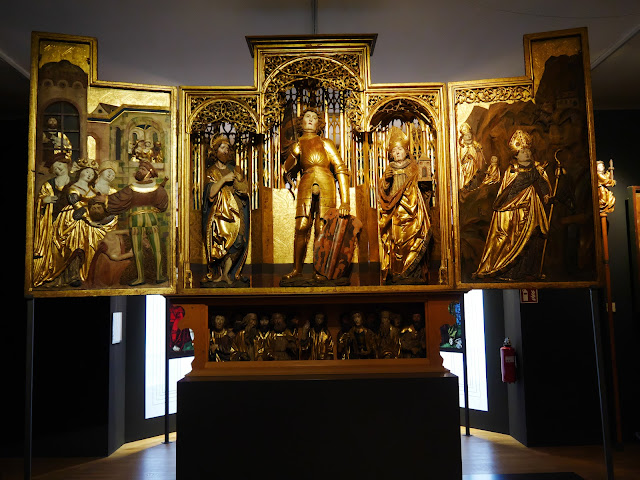





































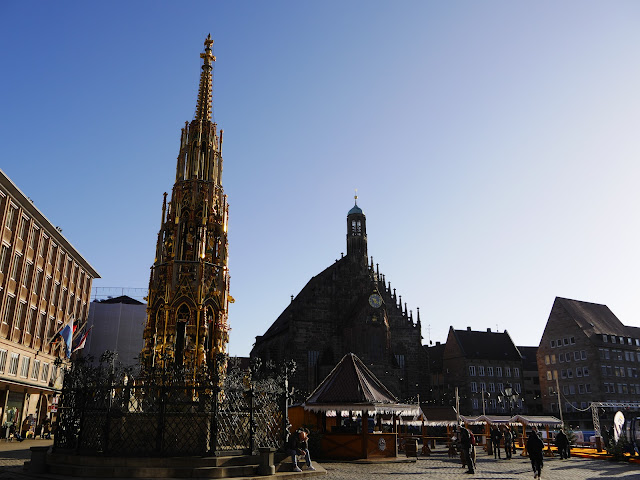



































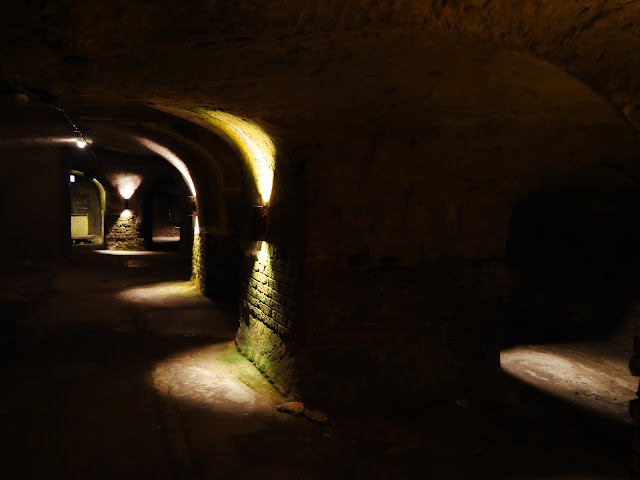
























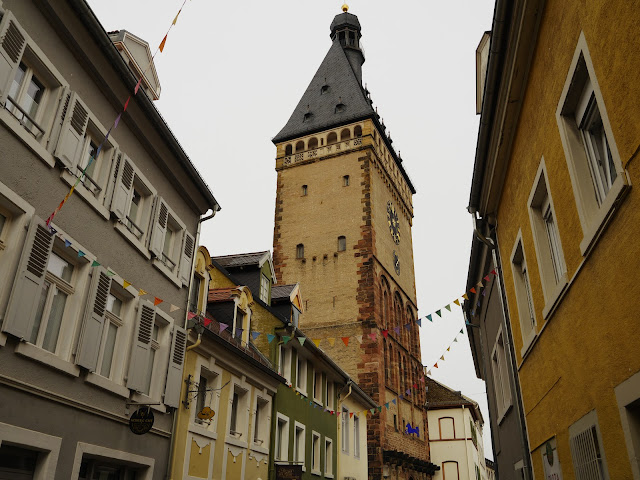






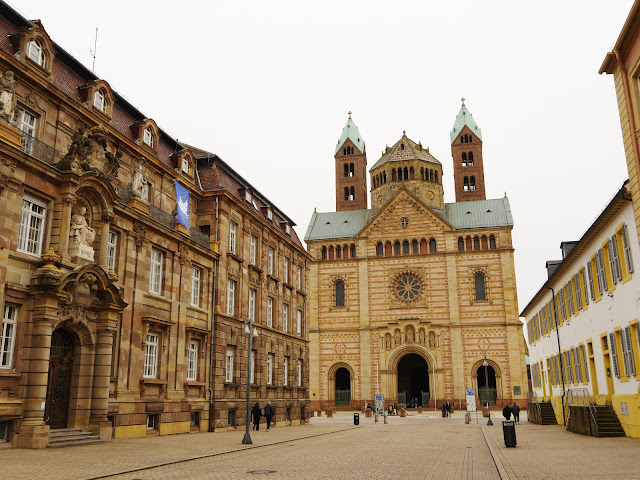





















































































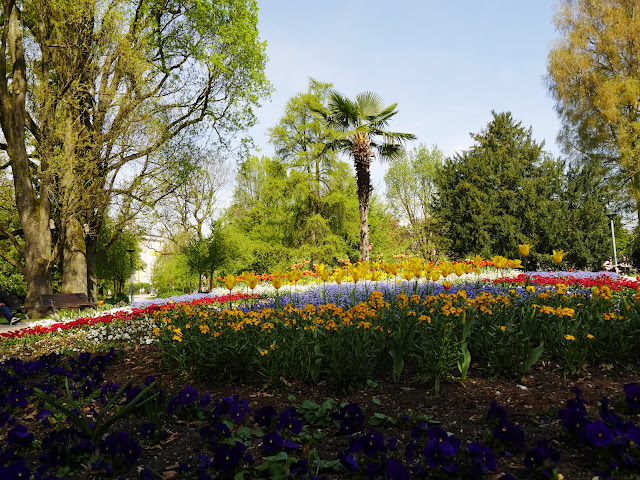


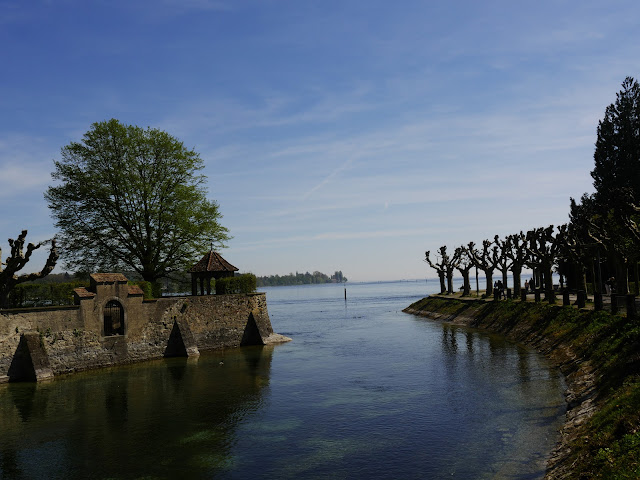






































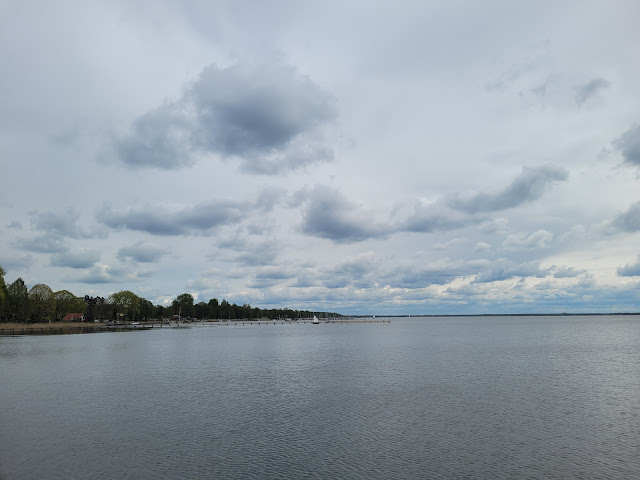












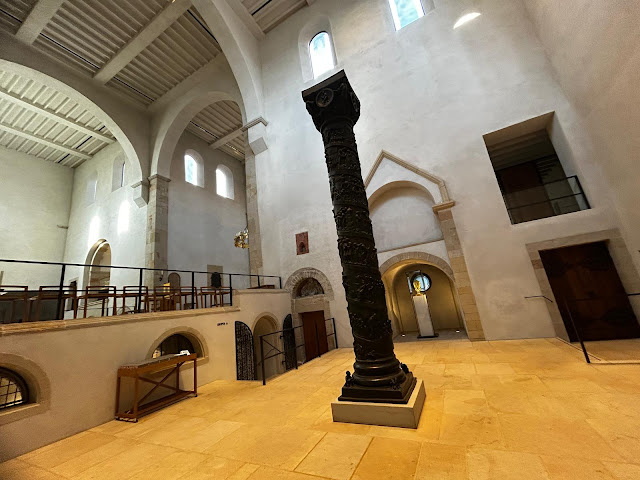



Comments
Post a Comment